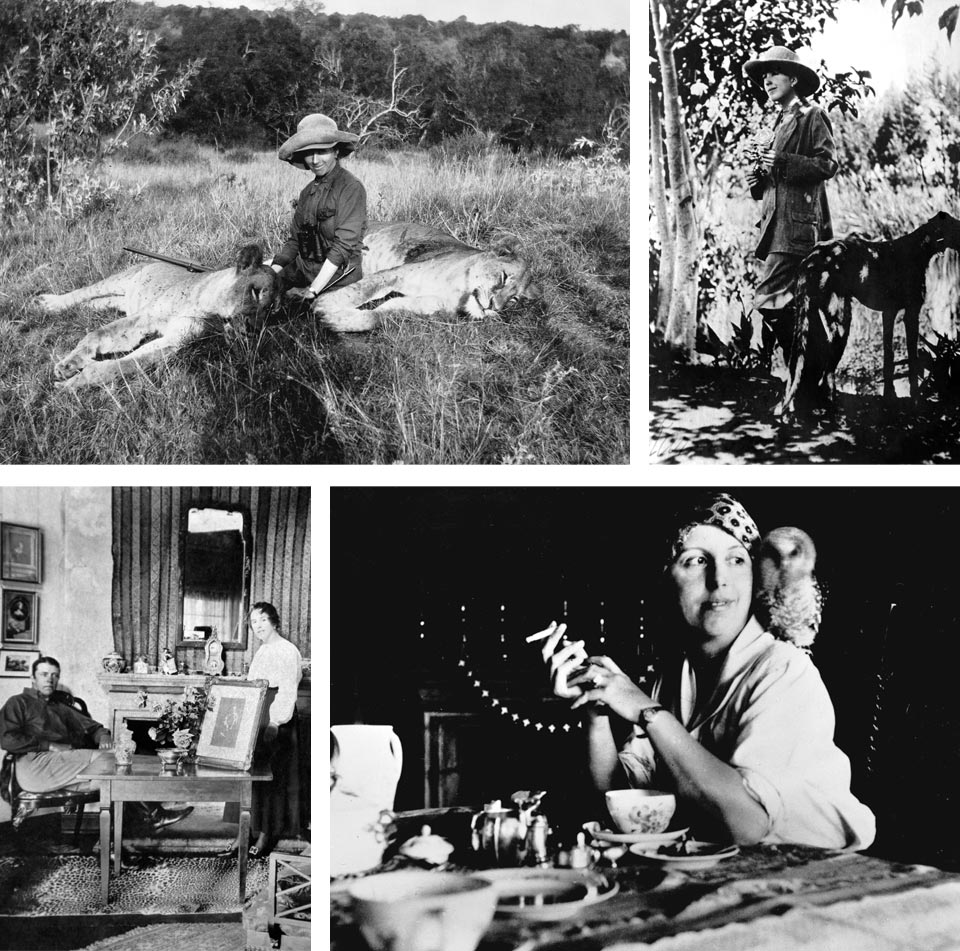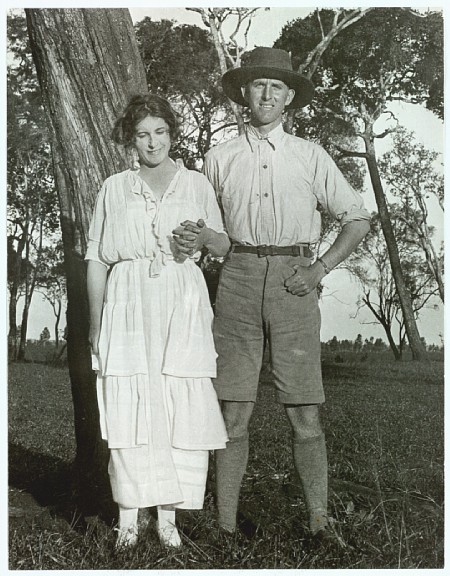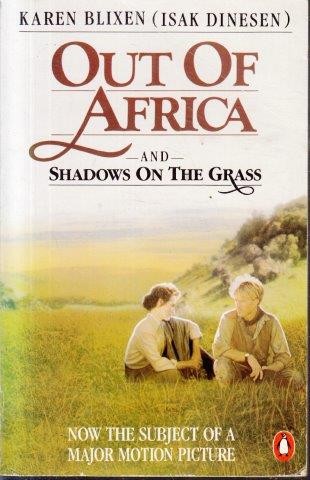Karen Blixen
Author of Out of Africa
Karen Blixen
Blixen is best known for Out of Africa, an account of her life while living in Kenya, and for one of her stories, Babette's Feast, both of which have been adapted into Academy Award-winning motion pictures. She is also noted, particularly in Denmark, for her Seven Gothic Tales. She was considered several times for the Nobel Prize in Literature.
I am not a novelist, really not even a writer; I am a storyteller. One of my friends said about me that I think all sorrows can be borne if you put them into a story or tell a story about them, and perhaps this is not entirely untrue. To me, the explanation of life seems to be its melody, its pattern. And I feel in life such an infinite, truly inconceivable fantasy.Karen Blixen in an interview with Bent Mohn in The New York Times Book Review (3 November 1957).
Blixen's memoirs of pioneering a coffee farm in Africa, where she had an affinity for all that was natural, brought her worldwide recognition as an authoress. Dinesen felt the native people—the Somali and the Masai tribes of Eastern Africa—with their rich tradition of oral storytelling, had an ear for her romantic and "old fashioned" style of writing. She particularly loved to tell stories with rhyme because it was something novel to their culture. Blixen described them saying about her storytelling, "…'Please, Memsahib, talk like rain,' so then I knew they had liked it, for rain was very precious to us there."
HER STORY
Baroness Karen von Blixen-Finecke (April 17, 1885 – September 7, 1962), née Dinesen, was a Danish author also known by her pen name Isak Dinesen. Blixen wrote works both in Danish and in English; but is best known for Out of Africa, her account of living in Kenya, and for her story, Babette's Feast, both of which were adapted into highly acclaimed motion pictures. Dinesen's short story writing was influenced by the Bible, the stories of the Arabian nights, Aesop's Fables, the works of Homer, and the fairy tales of Hans Christian Andersen, her fellow countryman.
Karen Dinesen, called Tania by her friends, was the the daughter of army officer Wilhelm Dinesen, and Ingeborg Westenholz, (and sister of Thomas Dinesen.) She was born in Rungsted, on the island of Zealand, in Denmark. Her father, a colorful character himself, was a soldier-of-fortune and adventurer who lived and worked as a fur trapper among the Sokaogan Chippewa in North America. He returned to Denmark but not before fathering a child with a Native American woman among the Chippewa. Karen's family, among the aristocratic and upper class, sent her to school at the Royal Academy of Art in Copenhagen. She also attended schools in Paris, and Rome. Later as a writer, she was to write eloquently in both her native tongue, as well as in English.
In 1914, at the age of 27, Karen Dinesen married her Swedish second cousin, Baron Bror von Blixen-Finecke, giving her the title Baroness. The couple moved to Kenya, and celebrated their wedding in Mombasa the day after their arrival. As pioneers to Africa they operated a coffee plantation bought with funds donated to them by their families. Life in Africa for the pair was initially blissful as Karen wrote, "Here at long last one was in a position not to give a damn for all conventions, here was a new kind of freedom which until then one had only found in dreams!" The romantic ideals and notions that the couple began with in Africa would eventually give way to realities and hardships that would severely challenge them.
The Blixen's marriage, based on the idea of sharing an adventure together, did not last. Bror, gregarious and outgoing, was frequently away for long periods on safaris or military campaigns. His nomadic lifestyle was at odds with the demands of a married gentlemen farmer. It was during this first year of marriage that Karen may have contracted syphilis from Bror. Although she never exhibited the extreme late stages of the disease, such as loss of mental acumen, its diagnosis and subsequent treatments would plague her. In those times, syphilis, greatly dreaded and feared, was treated with arsenic and mercury; treatments that most likely contributed to the decline in her health over the years. The couple separated in 1921 and were divorced in 1925 with Karen being left to run the coffee plantation as it went through misfortune and mishap. For the next 17 years, even after she and her husband divorced, she managed her 4,000-acre coffee plantation at the foot of the Ngong Hills in East Africa, then returned to Denmark and her new life as a writer under the pen name of Isak Dinesen. While still in Africa, she met and fell in love with English big game hunter Denys Finch Hatton, with whom she lived from 1926 to 1931. In her memoir Out of Africa he is simply described as a friend. They never married, most likely due to Karen’s health issues, and after suffering two miscarriages, she was never able to have children. Their intimate, but sometimes volatile relationship, was prematurely ended by Finch Hatton's death in a plane crash in 1931. This tragedy, compounded by the failure of the coffee plantation (due partly to the Great Depression's worldwide effects), took its toll upon Dinesen's health and finances. She was forced to abandon her beloved farm in 1931 and return to Denmark. In saying goodbye to Africa, a place where she experienced both tremendous love and wrenching loss, she reflected: If I know a song of Africa, - I thought, of the Giraffe, and the African new moon lying on her back, of the ploughs in the fields, and the sweaty faces of the coffee-pickers, does Africa know a song of me?Although, she tried to visit on a few occasions, Karen Blixen was never able to return to Africa.
Her years in Kenya are recorded in a nonfiction book, Out of Africa (1937; Den afrikanske farm). These highly regarded memoirs of her years in Kenya reveal an almost mystical love of Africa and its people. The book is a poetic reminiscence of her triumphs and her sorrows on the loss of her farm, the death of her companion, the English hunter Denys Finch Hatton, and the disappearance of the simple African way of life she admired.
Her second book, the one that became her best known, was her lyrical and compelling memoir Out of Africa published in 1937. This book, vivid in its description of farming and native peoples; however, lacks historical detail about her time there and the narrative has been described as "though the author were recounting a dream." It opened:
I had a farm in Africa, at the foot of the Ngong Hills. The equator runs across these highlands, a hundred miles to the North, and the farm lay at an altitude of over six thousand feet. In the day-time you felt that you had got high up, near to the sun, but the early mornings and evenings were limpid and restful, and the nights were cold. In the face of war and industrialism it was prized by readers for being romantic, mysterious, and exotic; a description that fits the author as well as the book. Out of Africa sealed Dinesen's reputation and gained her worldwide recognition as an author. In 1939 she was awarded the Tagea Brandt Rejselegat. She was twice nominated for the Nobel Prize in Literature, in 1954, when Hemingway won it, and in 1957 when Albert Camus did. Accepting the award, Hemingway said he felt three other writers should have been considered before him, Carl Sandburg, Bernard Berenson and "that beautiful writer Isak Dinesen".Her Legacy and Works
Karen, the suburb of Nairobi where Blixen made her home and operated her coffee plantation, was named after her. There is a Karen Blixen Coffee House and Museum, set near her former home.
Seven Gothic Tales (1934 in USA, 1935 in Denmark) ISBN 0679600868
Out of Africa (1937 in Denmark and England, 1938 in USA) ISBN 0679600213 Winter's Tales (1942) ISBN 0679743340 The Angelic Avengers (1947) ISBN 0226152928 Last Tales (1957) ISBN 0679736409 Anecdotes of Destiny (1958) ISBN 0394711777 Shadows on the Grass (1960 in England and Denmark, 1961 in USA) ISBN 0394710622Courtesy: newworldencyclopedia.org
ARTICLES OF INTEREST
DINESON A BIG SELLER AGAIN WITH FILM TIE-IN by EDWIN MCDOWELLDEC, New Yoork Times 1985.



